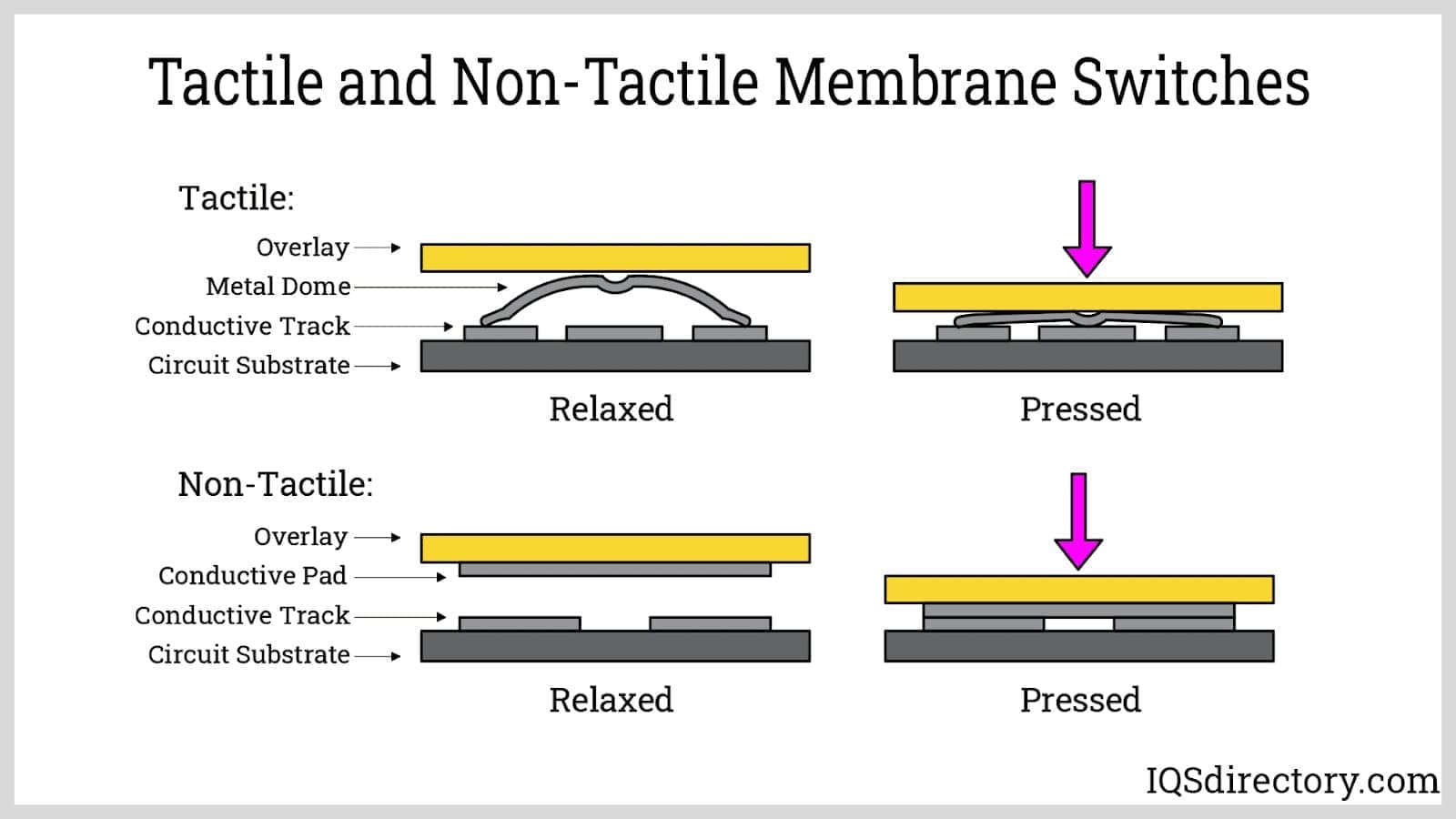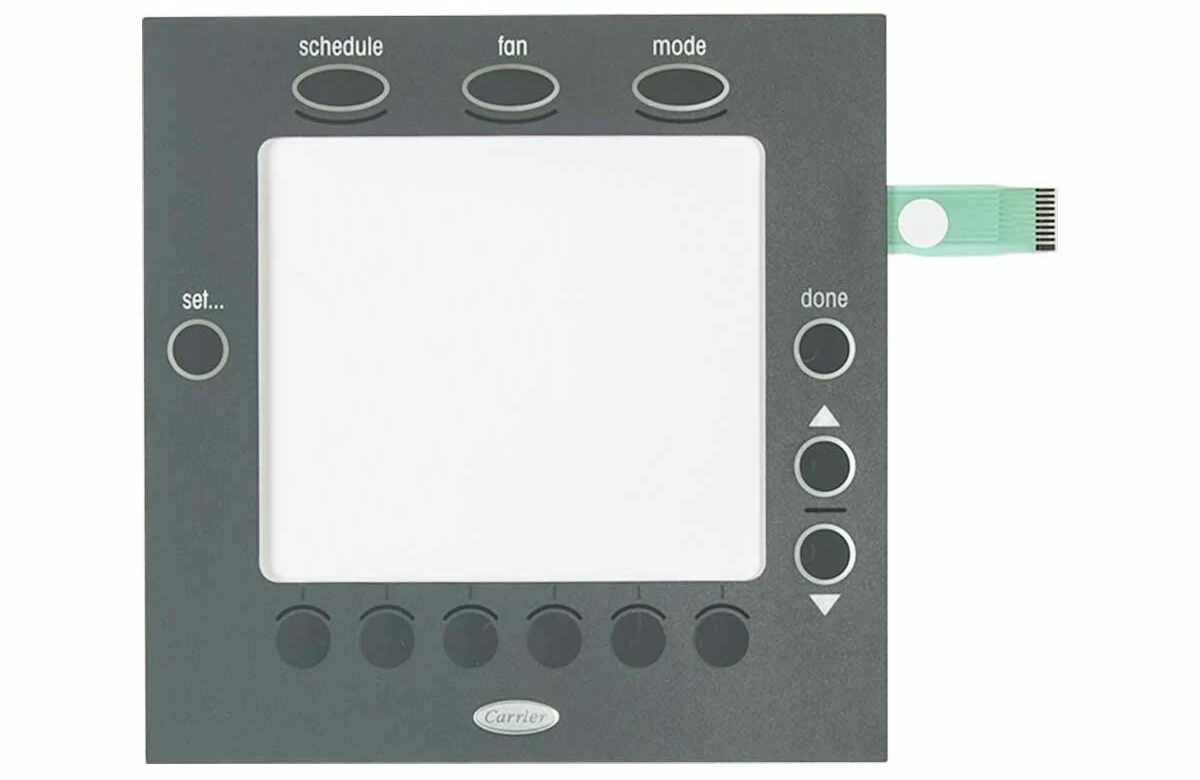High-Performance Products from a Membrane Switch Manufacturer You Can Trust
High-Performance Products from a Membrane Switch Manufacturer You Can Trust
Blog Article
Comprehending the Importance of Membrane Switch in Modern Electronic Devices and Their Applications
Membrane changes work as a necessary component in modern electronic devices, offering a reliable interface for individual communication. Their lightweight and personalized nature makes them ideal for an array of applications throughout varied industries. Recognizing their essential parts and benefits can offer understandings right into their expanding importance. As innovation proceeds to breakthrough, the development of Membrane switches over questions concerning their future applications and style advancements. What exists in advance in this dynamic field?

What Are Membrane Switches?
Membrane buttons are necessary components in modern-day electronic devices, acting as user interfaces that promote interaction between gadgets and users. These buttons contain several layers, consisting of a graphic overlay, a glue layer, and a circuit layer, all of which work together to create a useful and durable interface. The style allows for a flat, inconspicuous service that can be tailored pertaining to dimension, shape, and aesthetic appearance, making them suitable for various applications, from customer electronics to clinical devices. The responsive responses given by Membrane switches over boosts user experience, while their resistance to dust and moisture makes them excellent for challenging settings. Moreover, Membrane switches can include functions such as backlighting and published graphics, better broadening their functionality. Their versatility and robustness make them a favored option in industries where reliability and simplicity of usage are paramount, eventually adding to the smooth procedure of modern-day digital devices.
Secret Parts of Membrane Switches Over
While numerous elements add to the functionality of a membrane switch, three main layers play considerable functions in its layout and procedure. The leading layer, usually made from a durable polymer, acts as the user interface for customer interaction, usually featuring published graphics and symbols. Underneath this is the spacer layer, which preserves the necessary range in between the top layer and the circuit layer. This spacer layer assurances that the switch turns on just when pushed, avoiding accidental inputs. Ultimately, the circuit layer includes conductive traces that complete the electric circuit when the leading layer is depressed. These traces can be made from numerous products, including copper or silver. Together, these elements develop a durable and dependable tool that is portable and flexible, ideal for a wide variety of electronic applications, from home devices to clinical devices. Recognizing these crucial components is vital for valuing the general functionality of Membrane switches.
Advantages of Making Use Of Membrane Changes

Membrane Switch Manufacturing Refine
Comprehending the Membrane switch production process exposes the detailed steps entailed in creating these important parts. The procedure normally begins with the layout stage, where designs and requirements are produced utilizing specialized software. Following this, the graphic overlay is printed on a versatile substratum, typically making use of high-resolution printing methods to assure clearness and precision.Next, the adhesive layers are used, which offer to bond the various parts together. The circuit layers, made from conductive inks or products, are after that printed onto a separate substrate. These layers are carefully lined up and laminated to develop a practical switch.After setting up, the buttons undergo checking to validate functionality and resilience. Quality control procedures are applied throughout the process to identify and rectify any defects. Lastly, the finished Membrane switches are packaged and gotten ready for circulation, prepared to satisfy the needs of modern-day digital applications.
Applications of Membrane Switches Over in Numerous Industries
Membrane buttons are increasingly utilized across different markets, especially in medical devices and consumer electronics. In the medical field, they offer trusted control user interfaces for gadgets that require specific procedure. In consumer electronic devices, these buttons boost individual interaction by providing responsive and sleek user interfaces.
Medical Equipment Control
Numerous modern-day clinical gadgets utilize Membrane buttons for streamlined operation and boosted customer communication. These switches provide a dependable, durable user interface for a range of applications, including analysis devices, client monitoring systems, and medical instruments. Their customizable layouts enable for particular formats that can fit the special requirements of healthcare specialists, guaranteeing intuitive navigating and efficient accessibility to vital functions. Additionally, Membrane buttons are immune to contaminants, making them appropriate for sterile settings. The tactile responses they supply can enhance customer confidence, lowering the danger of mistakes during essential clinical procedures. Overall, the combination of Membrane switches in clinical equipment considerably adds to enhanced functional effectiveness and person security in medical care settings.
Consumer Electronic Devices Interfaces
In the domain of consumer electronic devices, Membrane switches play a crucial function in boosting interface across a vast range of gadgets. These buttons are integral to products such as remote controls, microwaves, and video gaming consoles, providing a effective and straightforward user interface. Their layout allows for a smooth combination of graphics and functionality, enabling makers to produce sleek, modern-day appearances without jeopardizing usability. Membrane switches are also known for their toughness, often enduring comprehensive use and exposure to numerous ecological problems. In addition, they can include attributes like backlighting and responsive comments, additional enhancing the user experience. As consumer needs for sophisticated yet intuitive user interfaces expand, Membrane switches over remain to be a crucial part in advancing electronic tool capability.
Layout Factors To Consider for Membrane Switches
Designing reliable Membrane changes needs careful attention to numerous factors that affect both capability and individual experience. One important consideration is the selection of products, as they can influence toughness, tactile feedback, and visual charm. Choosing a suitable adhesive is essential for assuring long-lasting bond and resistance to environmental factors.In enhancement, the layout and a knockout post design of the switch have to suit individual communication, with button dimensions and spacing optimized for convenience of use. The incorporation of graphics and check my site labeling must focus on clearness and exposure under various lights conditions.Consideration of electric qualities, such as actuation pressure and switch sensitivity, will certainly boost the responsiveness of the Membrane button. The style should fit manufacturing processes to assure cost-effectiveness and timely manufacturing. Overall, a well-balanced design improves both the performance and the user experience of Membrane buttons in modern electronics.

Future Fads in Membrane Switch Innovation
As innovation remains to advance, Membrane switches are positioned to incorporate new improvements that will boost their functionality and application in different areas. One substantial fad is the consolidation of resilient and flexible materials, which will raise the life-span and integrity of these buttons. Enhanced surface area textures and customizable graphics are also expected, allowing for even more instinctive customer interfaces.Moreover, the combination of wise innovation, such as touch-sensitive surfaces and haptic responses, is anticipated to boost individual communication, making Membrane switches over extra appealing and responsive. Additionally, advancements in published electronics will enable much more complicated wiring within thinner profiles, further increasing design possibilities.Sustainability will certainly also play an essential role in future developments, as makers check out environmentally friendly materials and manufacturing procedures. Overall, these patterns will assure that Membrane switches over remain relevant and indispensable in an interconnected and progressively electronic globe.
Often Asked Inquiries
Just How Do Membrane Changes Compare to Conventional Mechanical Switches?
Membrane switches over deal advantages over conventional mechanical switches, including reduced dimension, lighter weight, and boosted resilience. They generally give a secured surface area, improving resistance to dust and dampness, making them excellent for varied applications.
What Products Are Commonly Utilized in Membrane Switch Building And Construction?

Can Membrane Changes Withstand Extreme Environmental Conditions?
Membrane buttons can withstand severe ecological problems, depending upon their style and materials. Premium buildings typically feature resilience against temperature level fluctuations, moisture, and direct exposure to chemicals, making them ideal for different demanding applications throughout sectors.
How Much Time Do Membrane Switches Over Normally Last Prior To Failing?
Membrane read switches commonly show a life expectancy varying from 1 to 10 million actuations, depending on factors such as use regularity, environmental problems, and producing quality. Normal maintenance can extend their longevity and operational reliability substantially.
Are Membrane Changes Customizable for Certain Applications?
Membrane buttons are certainly personalized for certain applications. They can be tailored in design, capability, and size, allowing makers to meet special customer requirements and improve item looks while keeping operational performance and longevity. Membrane switches are crucial components in contemporary electronics, serving as user interfaces that promote interaction between devices and individuals. The tactile comments given by Membrane switches enhances individual experience, while their resistance to dust and moisture makes them suitable for challenging atmospheres. The consolidation of graphics and labeling ought to focus on clarity and exposure under various lighting conditions.Consideration of electric characteristics, such as actuation pressure and button sensitivity, will improve the responsiveness of the Membrane switch. Enhanced surface structures and adjustable graphics are likewise expected, enabling for even more user-friendly individual interfaces.Moreover, the assimilation of wise innovation, such as touch-sensitive surfaces and haptic comments, is anticipated to boost customer communication, making Membrane switches more interesting and responsive. Membrane switches deal advantages over traditional mechanical switches, consisting of minimized size, lighter weight, and improved resilience.
Report this page